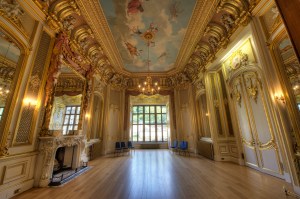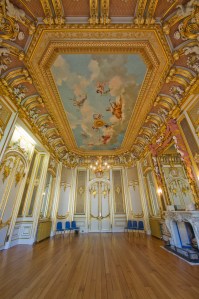The Gold Room was one of the principal reception rooms, the Great Drawing Room. It was earlier known as the Music Room, the gold motifs on the doors depicting musical instruments. It was a ladies withdrawing room; the two roundels above the doors depict female silhouettes.
The room, one of the finest in the Manor, is richly decorated with very elaborate and highly decorative Rococo style paneling. Rococo developed in France under Louis XV and grew out of the exuberance of the Baroque but with a much lighter style.
Gregory Gregory was known to have been in Paris in the aftermath of the Napoleonic Wars at a time when a tremendous amount of French furniture and fixtures were purchased by English aristocrats and landowners. Gregory was influenced by the recently completed “Elizabeth Saloon” at Belvoir Castle, created by Elizabeth 5th Duchess of Rutland in the 1820s, in the style of Louis XIV. The Duchess of Rutland imported genuine specimens of this style from the chateau of Madame de Maintenon, who secretly married Louis XIV in 1683.
Gregory Gregory used imported curved panels – perhaps Louis XV rather than Louis XIV and possibly in the style of Nicolas Pineau, a famous French decorative artist and a leader in the Rococo style. The room was built around the doors. The Rococo paneling is enhanced by the curvaceous Baroque cornices believed to have been added when the paneling was unboxed and finally installed at the Manor.
The ceiling painting is similar to those in the Elizabeth Salon at Belvoir Castle by Matthew Cotes Wyatt. It is possibly the work of John Gregory Crace (1809-89), who was the fourth generation of a very creative and noteworthy family of decorators who had worked on Windsor Castle, Buckingham Palace, and Chatsworth, amongst other great country houses. The ceiling depicts ladies sitting on clouds playing musical instruments; little Putti with flowers frolic around. Note the cherub putting a foot over the edge!
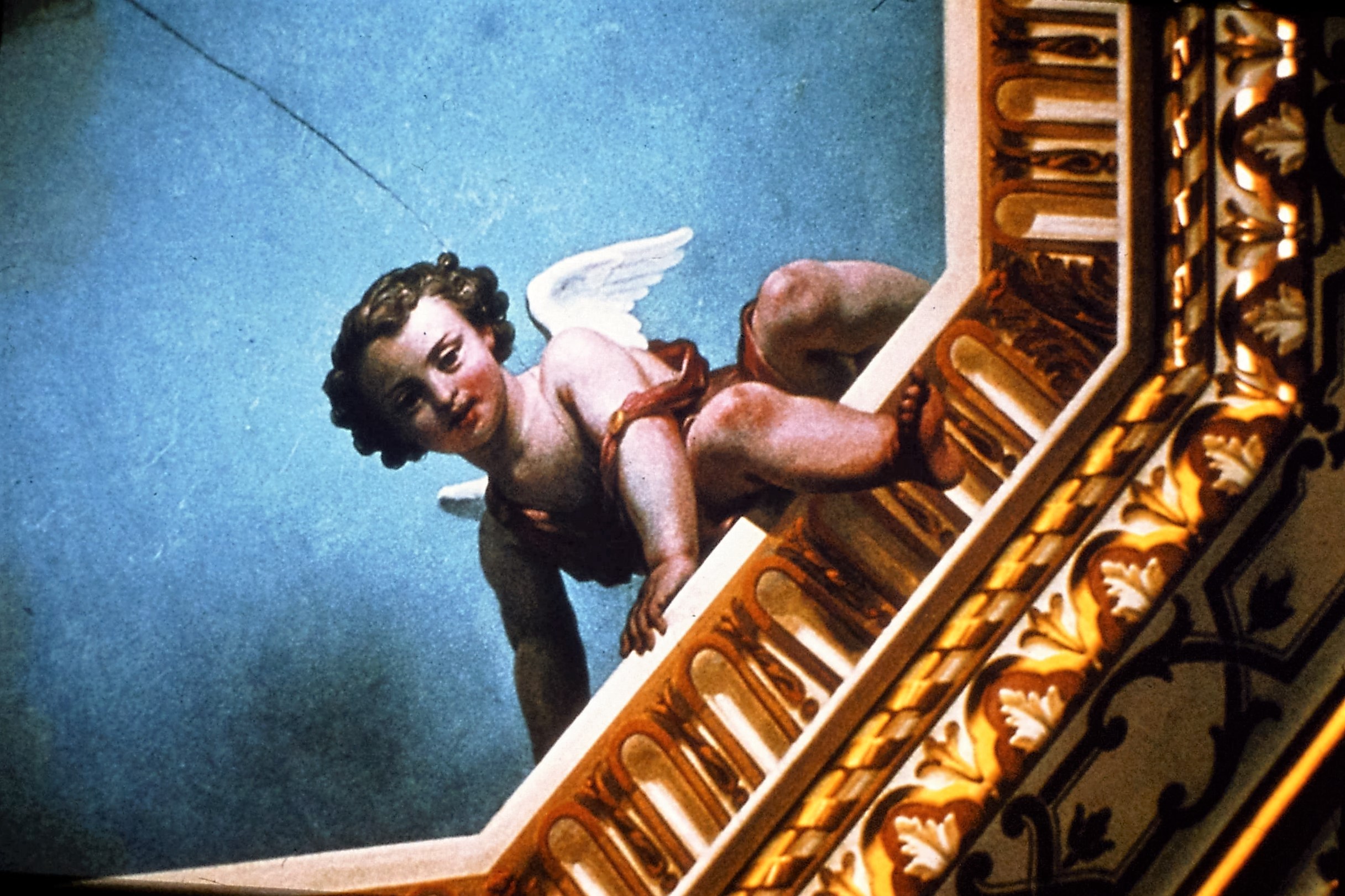
Detail of Gold Room ceiling cherub
The elongated quatrefoil flower set with a diamond in the background to the cove and upper panels is a Gothic motif, based on a Pugin design. It was often used by Crace in wallpaper, but unusual in this setting. It became known as the Crace Diape.
Note the “Galierie des Glaces” effects (Hall of Mirrors) as seen in the Palace of Versailles, creating an illusion of space.
Gregory Gregory has made his presence known by the elaborate GG monogram in the cornice corners of the room.
Also of note is the draped curtain effect in plaster, similar to work at Stoke Rochford (1845), the plasterers being supervised by William Burn; and the monogram over the fire: J.S.G (John Sherwin Gregory) who owned the Manor 1860-1869 (his wife Catherine continuing ownership until 1892). The Victorian giltwood overmantle mirror dates from 1840, as were the pair of Victorian brass candelabra.
Photography: Andrew Midgley (Gold Room Cherub); Linda Dawes
The Drawing Room at different dates
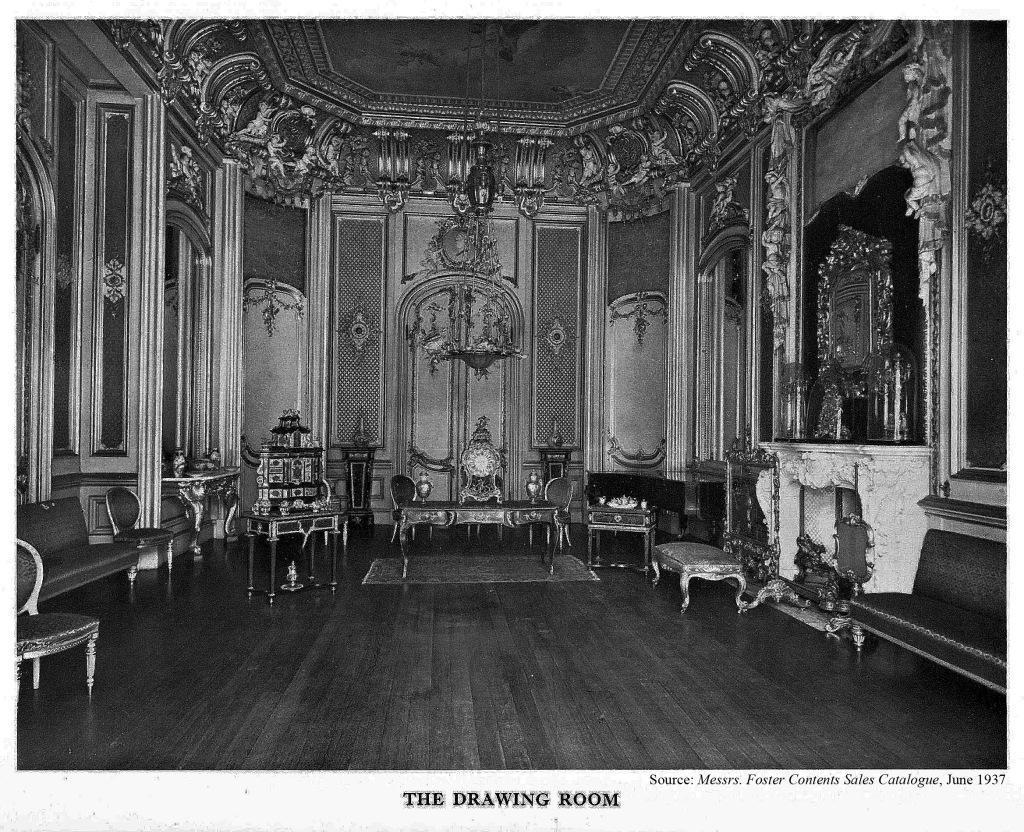
The Drawing Room. Source: Messrs. Foster Contents Sales Catalogue, 1937
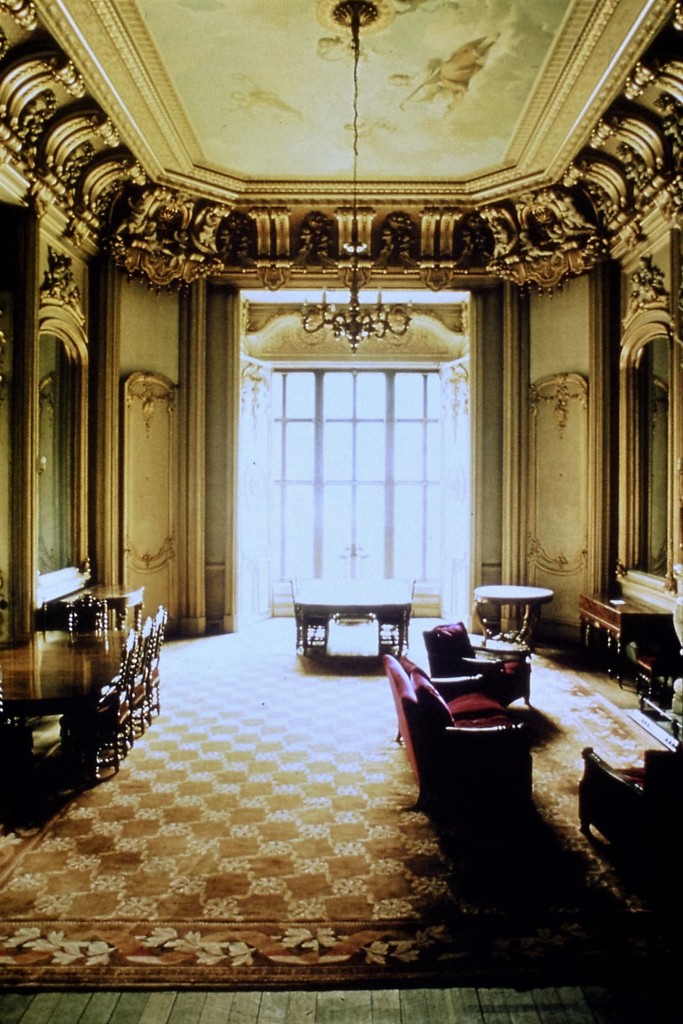
The Gold Room in 1970s

